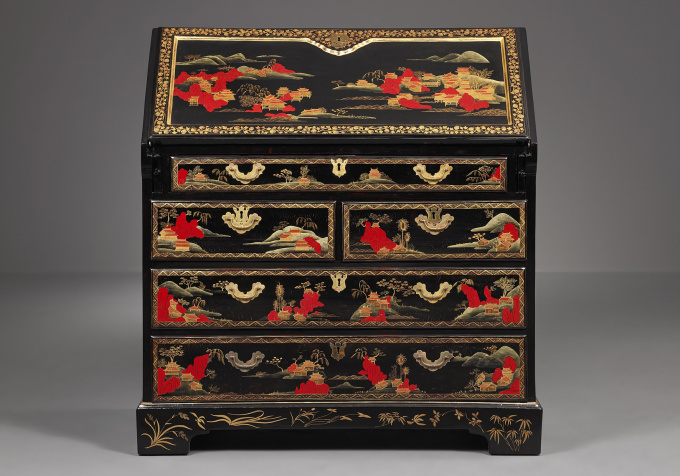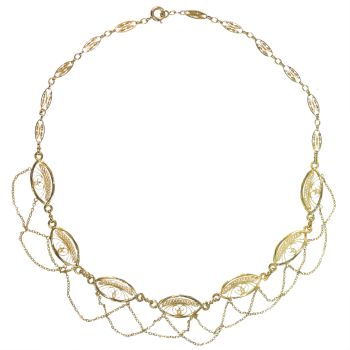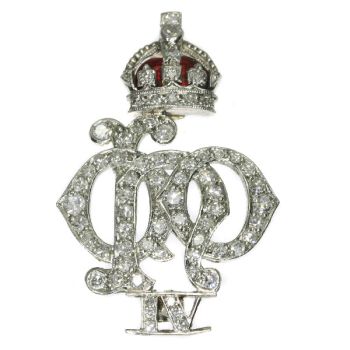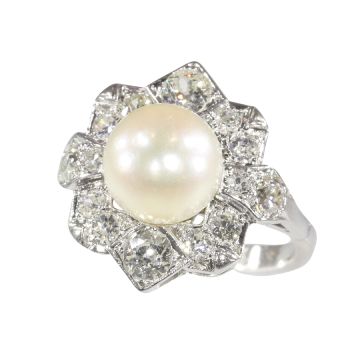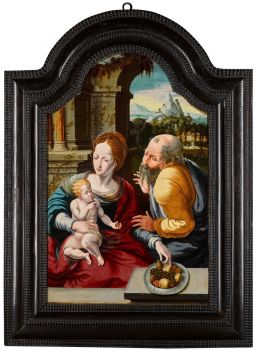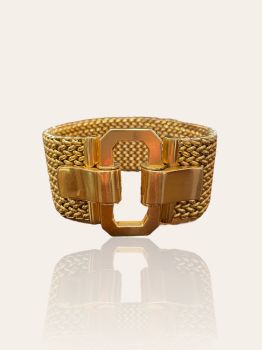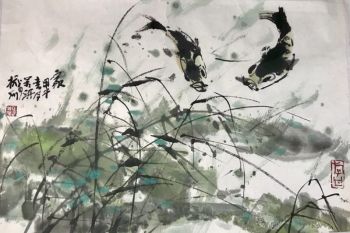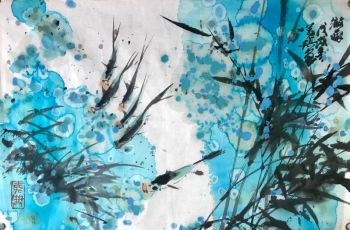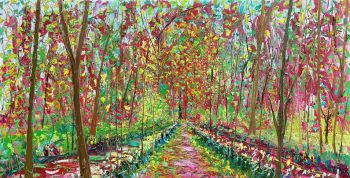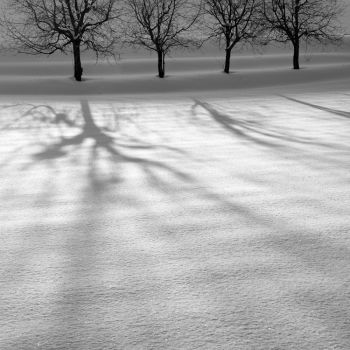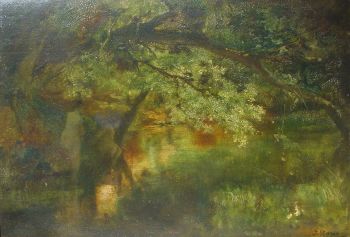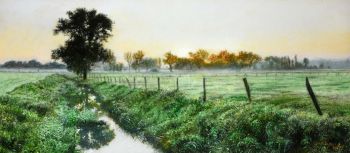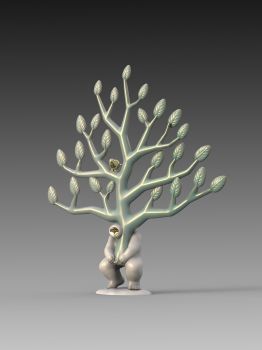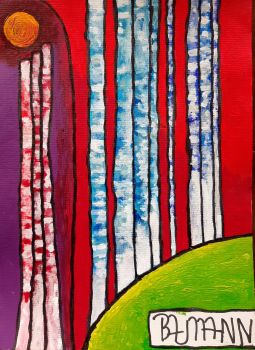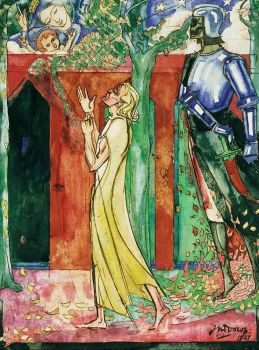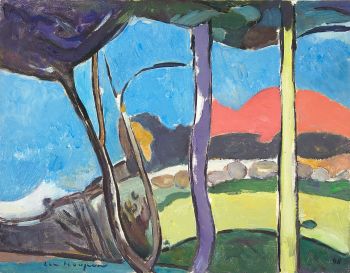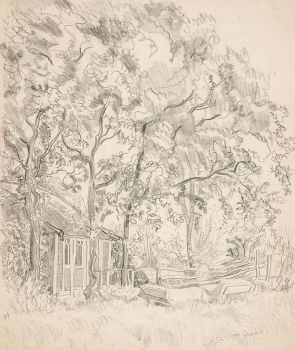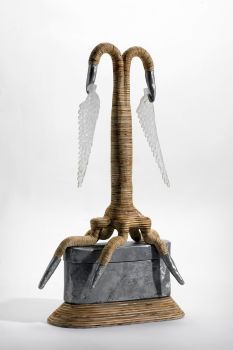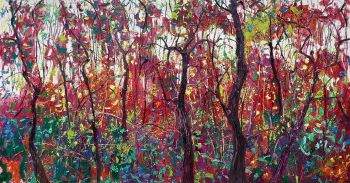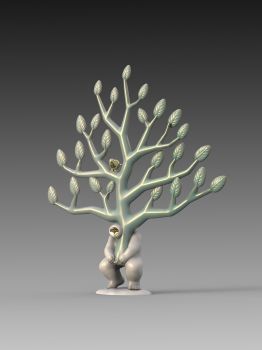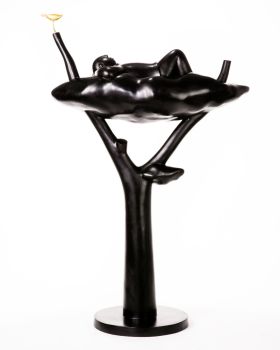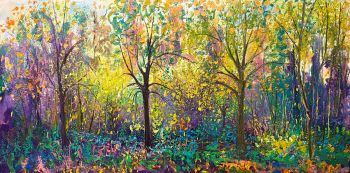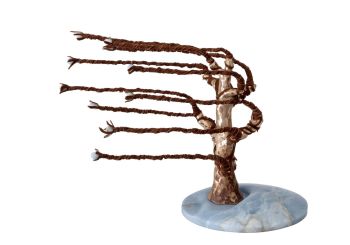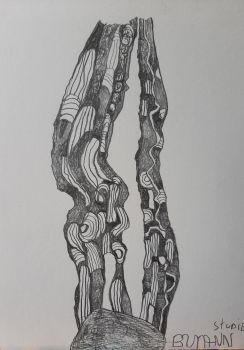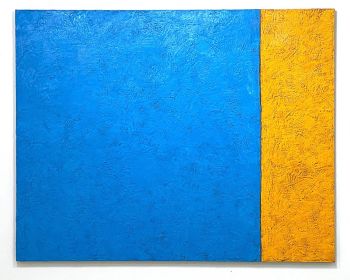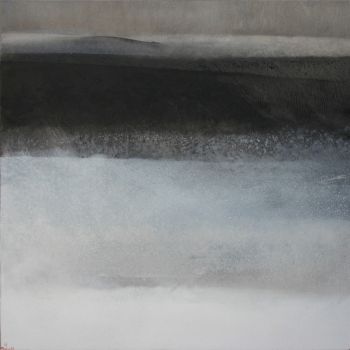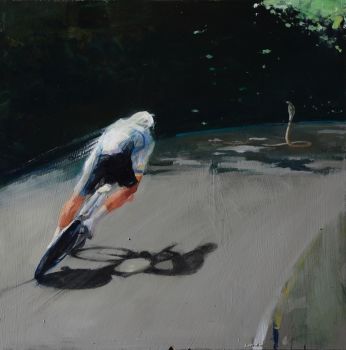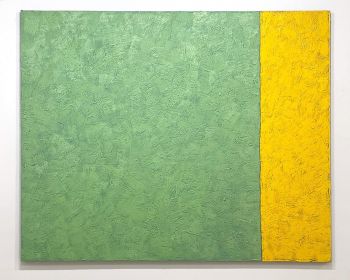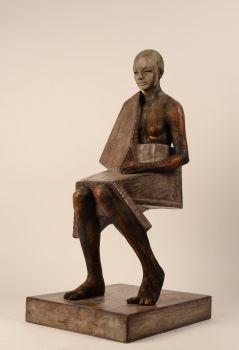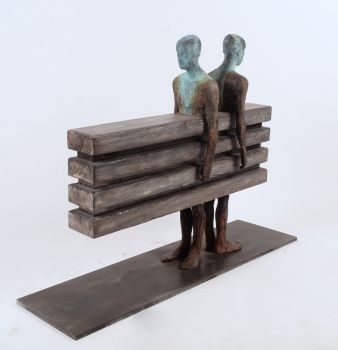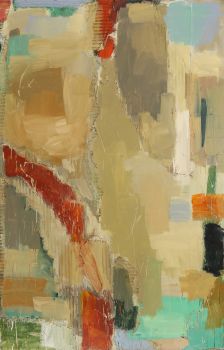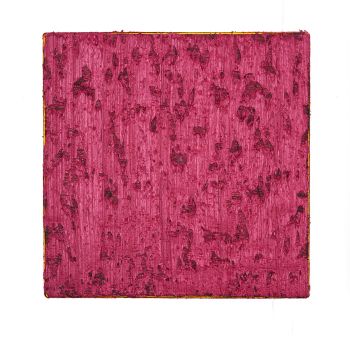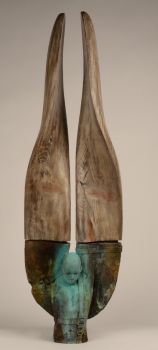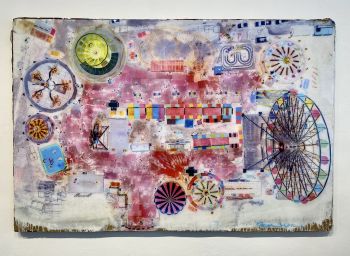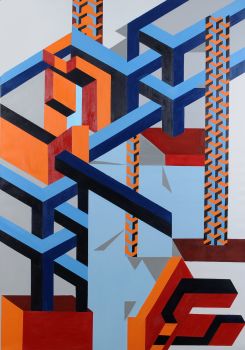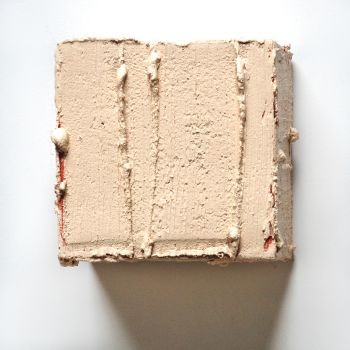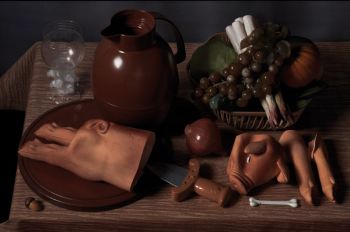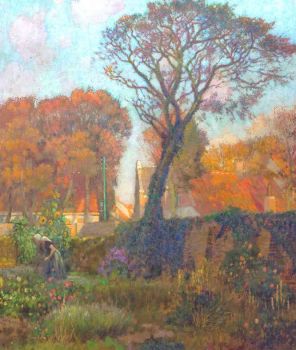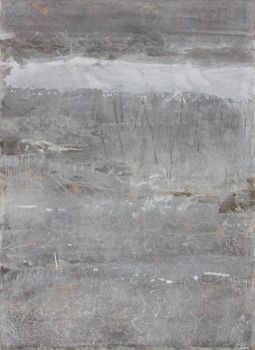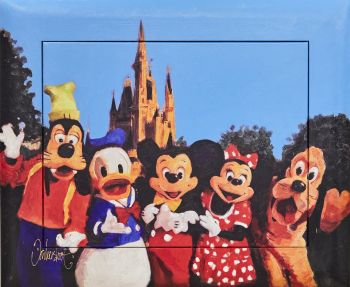Chinese Laquered Writing Desk made for the European Market 1740
Artista Desconocido
MaderaLaca chinaBarniz
107 ⨯ 100 ⨯ 61 cm
Actualmente no disponible a través de Gallerease
- Sobre la obra de arteA bureau or writing desk of Chinese lacquer presented here. It clearly is shaped after an English model of the same shape and dimensions, to be dated c. 1735-45. The lower part stands on a rectangular base, with four flat corner-feet, and is divided in four sections: below are two large drawers above each other, then there is a third section with two smaller drawers and on top a low drawer which is less wide. The upper part has a reclining fall-front which opens to function as a writing top, supported by two ledgers that can be pulled out. When lowered, it reveals a section with three reclining drawers on the left- and right-hand sides, separated by three compartments, each with a deep drawer below. These compartments are divided by two narrow panels, shaped as columns, that can be opened to the empty space behind. The top is flat; the drawers have shaped paktong handles.
The bureau is beautifully lacquered in shades of gold and partly with cinnabar red on a black lacquered ground. The five lower drawers, the outside of the fall-front, the flat top and the two sides show a river landscape with hills on the background, the rocky shores with houses, pavilions and trees. The large rock formations are detailed in low relief with cinnabar red lacquer, which gives the scenes a dramatic effect and certainly adds to the visual complexity of the landscapes.
The landscapes on the drawers are surrounded by narrow bands with a zig-zag pattern in gold; the fall front and the sides have bands with a continuing leaf- and flowerhead (or fruit) spray while the flat top has a narrow decorative band of a twisted cord.
The composing parts behind the fall front, the back of that flap and the three sides of the base are decorated with sprays of different plants and flowers, including bamboo, orchids, prunus and arrow-head, rendered as separate motifs in gold lacquer scattered over the surface.
The back of the bureau is lacquered black, without any decoration - it clearly was meant to be placed against the wall.
Apart from the fact that large pieces of Chinese lacquered furniture from this period are rare, the lacquered decoration of the bureau has some interesting features. First of all, the lavish use of cinnabar lacquer is very unusual, because this substance was expensive and was mostly used for smaller objects, mainly boxes or dishes for the domestic Chinese market. It is quite rare to see it on a piece of export lacquer.
Even more interesting are the stylistic features that are borrowed directly from decorations on Japanese lacquer, namely the zig-zag motif in the bordering bands of the lower drawers and the scattered flower motifs in gold. It is not difficult to point to many Japanese examples with such decorative motifs and therefore the question rises if this bureau is not only imitating an English model, but also tries to give a 'Japanese' impression. - Sobre el artista
Puede suceder que un artista o creador sea desconocido.
Algunas obras no deben determinarse por quién está hecho o por (un grupo de) artesanos. Algunos ejemplos son estatuas de la Antigüedad, muebles, espejos o firmas que no son claras o legibles, pero también algunas obras no están firmadas en absoluto.
También puedes encontrar la siguiente descripción:
•"Atribuido a …." En su opinión, probablemente una obra del artista, al menos en parte.
•“Estudio de….” o “Taller de” En su opinión, una obra ejecutada en el estudio o taller del artista, posiblemente bajo su supervisión
•“Círculo de…” En su opinión, una obra del período del artista que muestra su influencia, estrechamente asociado con el artista pero no necesariamente su alumno.
•"Estilo de …." o “Seguidor de…”. En su opinión, una obra ejecutada al estilo del artista pero no necesariamente por un alumno; puede ser contemporáneo o casi contemporáneo
•"Manera de …." En su opinión una obra al estilo del artista pero de fecha posterior
•"Después …." En su opinión, una copia (de cualquier fecha) de una obra del artista
•“Firmado…”, “Fechado…” o “Inscrito” En su opinión, la obra ha sido firmada/fechada/inscrita por el artista. La adición de un signo de interrogación indica un elemento de duda.
•“Con firma…”, “Con fecha…”, “Con inscripción…” o “Lleva firma/fecha/inscripción” en su opinión la firma/fecha/inscripción ha sido añadida por alguien que no es el artista
Artwork details
Related artworks
- 1 - 4 / 12
- 1 - 4 / 6
Artista Desconocido
UNA COLECCIÓN DE CUATRO CAJAS BÍBLICAS DE MARFIL DE SRI LANKAN18th century
Precio a consultarZebregs & Röell - Fine Art - Antiques
Artista Desconocido
UN NETSUKE MARINE MARFIL DE UN HOLANDÉS CON UN VENTILADOR CHINO18th century
Precio a consultarZebregs & Röell - Fine Art - Antiques
Artista Desconocido
UN NETSUKE DE MARFIL DE UN HOLANDÉS CON UNA COCKEREL18th century
Precio a consultarZebregs & Röell - Fine Art - Antiques
1 - 4 / 24- 1 - 4 / 24
Samuel Dejong
Anatomia Blue Heritage, Hercules Open2017 - 2019
Precio a consultarVilla del Arte Galleries
 curada por
curada porGallerease Magazine
Artista Desconocido
An Indian part-gilt silver-clad ceremonial sceptre or mace with a tiger’s head1850 - 1900
Precio a consultarZebregs & Röell - Fine Art - Antiques
 curada por
curada porDanny Bree
1 - 4 / 24

